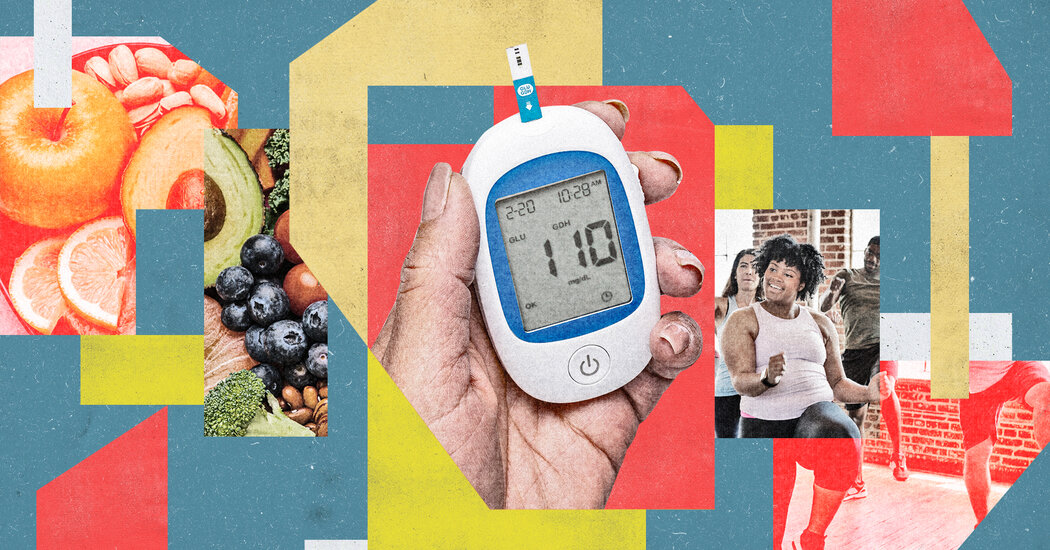More than one in three adults in the United States has prediabetes, higher-than-normal blood sugar levels that can lead to diabetes. And more than one in 10 has diabetes, characterized by still higher blood sugar levels that can eventually lead to eye problems, heart disease, a stroke, nerve damage and other serious health issues.
It’s possible to avoid these complications by keeping your blood sugar in check. What you eat, when you eat, your exercise habits, and even how stressed you are all can affect how high (or low) your sugar level goes.
“You don’t want to wait until you have prediabetes or diabetes to start thinking about it,” said Dr. Elizabeth Halprin, chief of adult diabetes at the Joslin Diabetes Center in Boston. “You want to think about it to prevent it.”
What is blood glucose?
Your body breaks down the carbohydrates you eat and turns them into glucose, which is then absorbed into the bloodstream. This is the body’s primary source of energy.
Your pancreas senses how much glucose, or sugar, is in the blood and produces a corresponding amount of the hormone insulin. Insulin acts like a key to let sugar into your cells, which use it for fuel.
Some sugar normally remains in the blood and binds to proteins, like hemoglobin. This isn’t a problem in and of itself, but too much can be a bad thing.
.scrolly-container {
z-index: 99;
}
[class*=”scrolly-image-“] {
object-fit: contain;
max-width: 600px;
left: 50%;
transform: translateX(-50%);
}
[class*=”scrolly-text-“] {
padding-left: 20px;
padding-right: 20px;
}
[class*=”scrolly-text-“] span {
display: inline-block;
font-weight: 100;
font-family: nyt-imperial,georgia,’times new roman’,times,serif;
font-size: 1.25rem;
box-sizing: border-box;
border-radius: 3px;
background-color: #222;
padding: 20px;
}
@media (min-width: 740px) {
}
